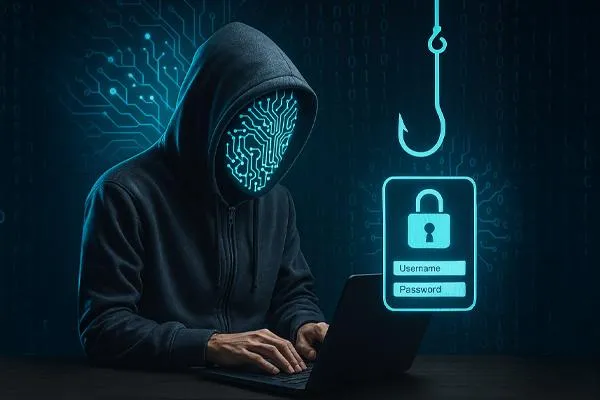
How AI Is Making Hackers More Dangerous (And What to Do About It)
AI isn’t just changing business—it’s changing cybersecurity itself. Today’s hackers are using AI to launch smarter phishing attacks, craft believable business email compromises, and deploy AI-powered malware that evolves in real-time. As a cybersecurity speaker and trainer, I help companies stay ahead of these threats with awareness training that actually works.
How AI Is Making Hackers More Dangerous (And What to Do About It)
Artificial intelligence isn’t just changing the future of business—it’s rewriting the rules of cybersecurity.
While companies are using AI to boost productivity and efficiency, cybercriminals are using it to become faster, smarter, and way more dangerous.
As an AI cybersecurity speaker, I’ve trained organizations across industries on how to defend against this new breed of AI-powered attacks. Spoiler: It’s not about firewalls and IT jargon anymore. It’s about awareness, smart systems, and real-time action.
Here’s what you need to know.
How AI Affects Cybersecurity (And Not in a Good Way)
AI isn’t inherently evil—but it can be used in scary ways.
Cybercriminals are using AI to:
Write flawless phishing emails that mimic your boss’s voice
Auto-generate fake invoices and credentials that pass a quick glance
Launch targeted business email compromise attacks
Create malware that adapts and avoids detection
This is what we mean when we talk about AI-powered cyber attacks—the bad guys are now using robots to outsmart humans.
Real Example: The Rise of Business Email Compromise
Imagine your finance manager gets an email from “you,” asking to wire funds to a vendor. The email sounds right. The signature is perfect. Even the tone matches how you write.
But… you didn’t send it.
That’s a classic business email compromise (BEC) scam—and AI makes it disturbingly easy to pull off. I’ve seen companies lose hundreds of thousands in minutes because of one fake email.
AI and Phishing Are a Dangerous Combo
As a phishing awareness speaker, I train teams to recognize fake emails before they click. But AI makes that job harder.
Tools like WormGPT and FraudGPT are specifically built for artificial intelligence and hacking. They write emails that don’t just look legit—they feel legit.
And they’re only getting better.
AI Is Writing Malware, Too
Yes, really.
AI can now:
Analyze your company’s tech stack
Write custom malware to target your system
Learn from your defenses and evolve in real time
These AI-powered cyber threats are no longer theoretical—they’re here.
How to Protect Your Business from AI-Driven Cyber Attacks
You don’t have to be a tech genius to fight back. But you do need to be proactive. Here are a few ransomware protection tips and general best practices that every business should implement now:
Train your employees — AI-based scams are people problems, not just tech problems.
Use multi-factor authentication (MFA) — Everywhere. Seriously.
Install endpoint detection and response (EDR) tools — Traditional antivirus won’t cut it anymore.
Back up your data — And test those backups regularly.
Get leadership on board — Cybersecurity isn’t just IT’s job anymore.
Hire a Cyber Security Keynote Speaker Who Makes This Make Sense
I’m Mike Wright, The Security Guru, and I help companies stay ahead of threats they don’t even know exist yet.
If your next event, conference, or internal training needs a speaker who can break down how AI affects cybersecurity in plain English—and actually get your team to care—I’m your guy.
✅ Keynotes
✅ Live workshops
✅ Virtual & in-person sessions
✅ Real protection, not buzzwords
➡️ Book Mike Wright — and protect your company the Wright way.
